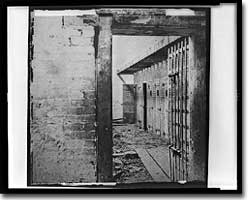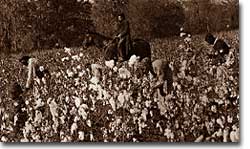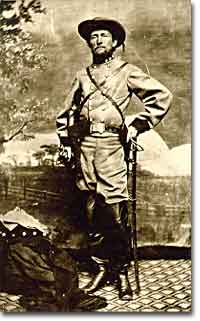
27. The Peculiar Institution

Slaves being put up for auction were kept in pens like this one in Alexandria, Virginia — just a few miles from Washington, D.C.
"The Peculiar Institution" is slavery. Its history in America begins with the earliest European settlements and ends with the Civil War. Yet its echo continues to reverberate loudly. Slavery existed both in the north and in the South, at times in equal measure. The industrialization of the north and the expansion of demand for cotton in the south shifted the balance so that it became a regional issue, as the southern economy grew increasingly reliant on cheap labor. As is always true in history, cultures grow and thrive in all conditions. Two interdependent cultures emerged in the American south before the Civil War — the world the slaveholders created for themselves and the world of their slaves. Even though slaves were not permitted to express themselves freely, they were able to fight back even though enchained.

Slaves worked long hours in the hot sun picking cotton for their owners. Overseers watched the slaves progress and disciplined those that were deemed to be working too slow.
Although African-Americans had been brought to British America since the time of Jamestown colony, American slavery adopted many of its defining characteristics in the 19th century. The cotton gin had not been invented until the last decade of the 1700s. This new invention led the American south to emerge as the world's leading producer of cotton. As the south prospered, southerners became more and more nervous about their future. Plantation life became the goal of all the south, as poor yeoman farmers aspired to one day become planters themselves. Rebellions and abolitionists led southerners to establish an even tighter grip on the enslaved.

Southern gentlemen like Colonel John Mosby, CSA, were glorified for their adherence to a code of honor most closely paralleled by medieval chivalry.
Even amidst the bondage in the south, there was a significant population of free African-Americans who were creating and inventing and being productive.
The Peculiar Institution refused to die. Great Britain had outlawed the slave trade long before its former American colonies.
New nations in the Western Hemisphere, such as Mexico, often banned slavery upon achieving independence.
But in America, political, religious, economic and social arguments in favor of the continuation of slavery emerged. Slavery became a completely sectional issue, as few states above the Mason-Dixon Line still permitted human bondage. These arguments also revealed the growing separation in the needs and priorities of the northern industrial interests versus the southern planting society, all of which culminated in the Civil War.





